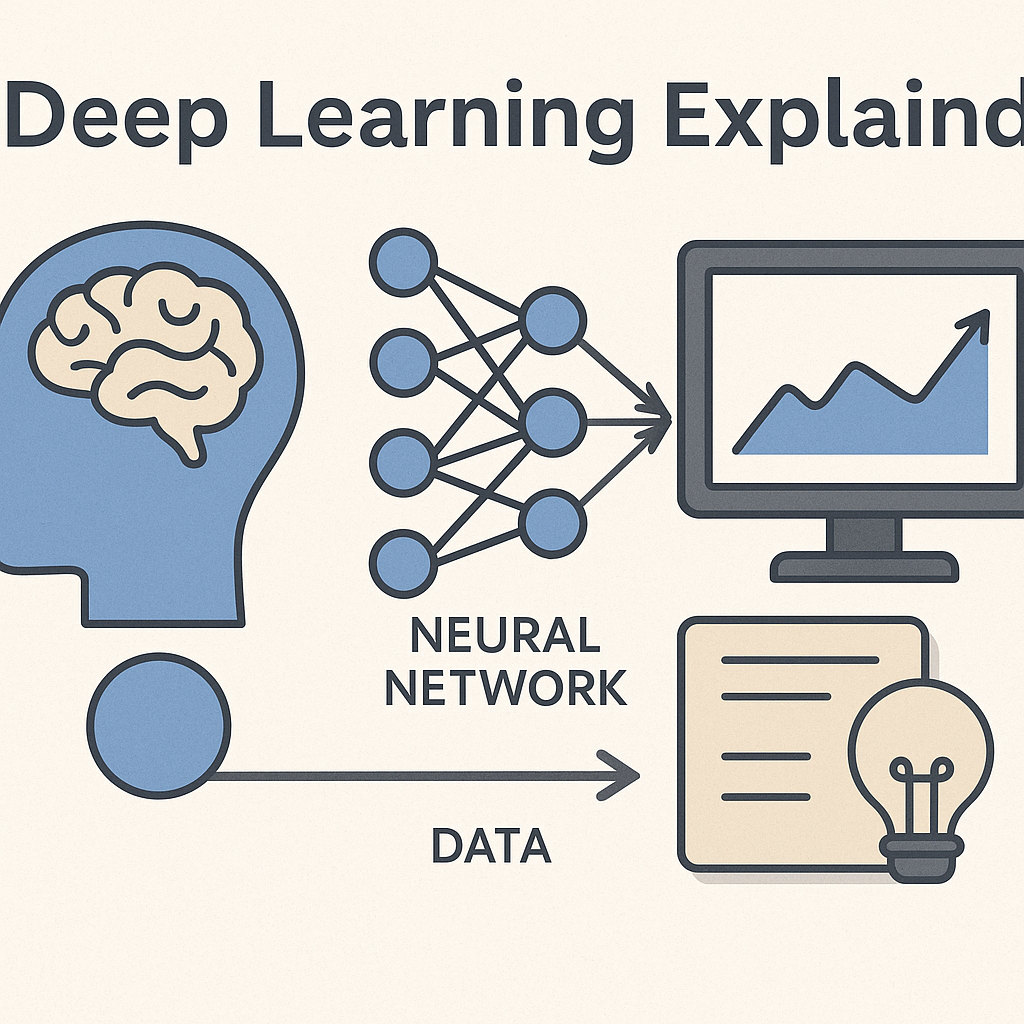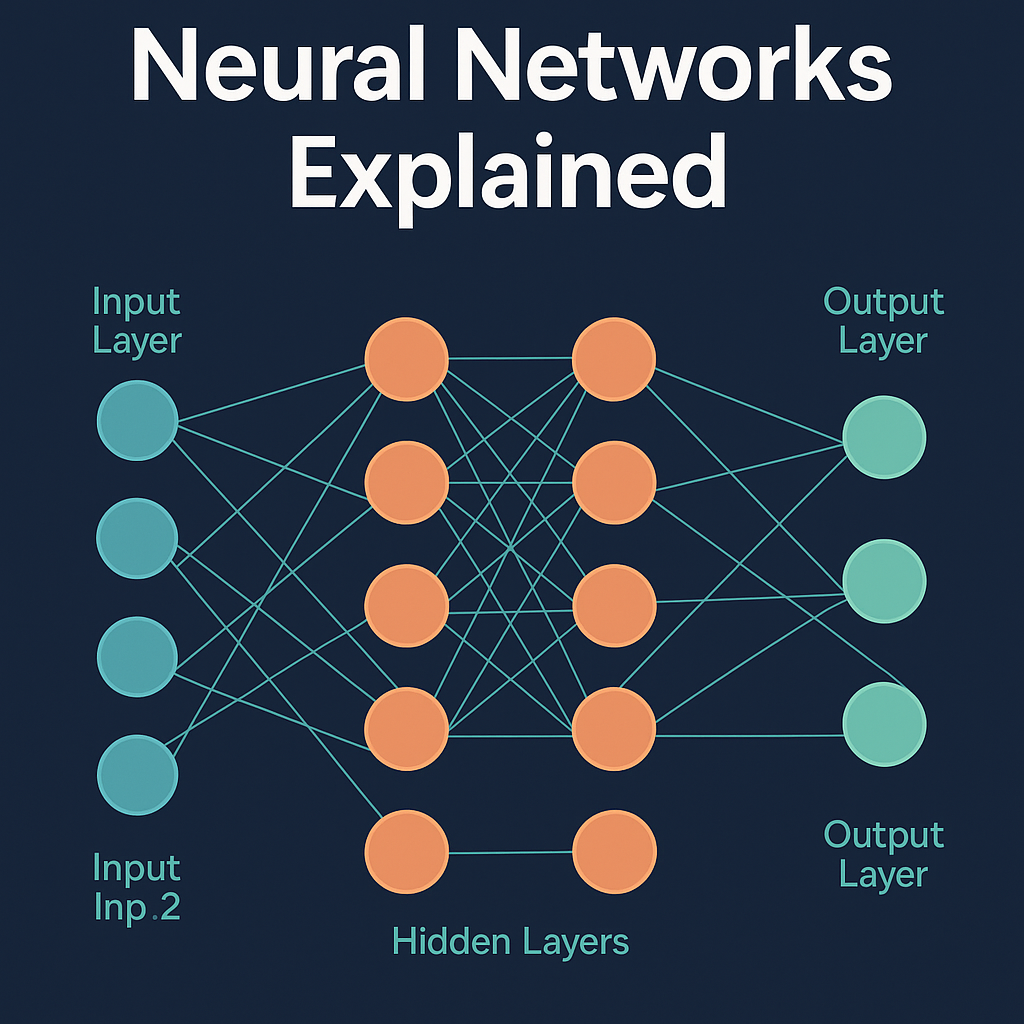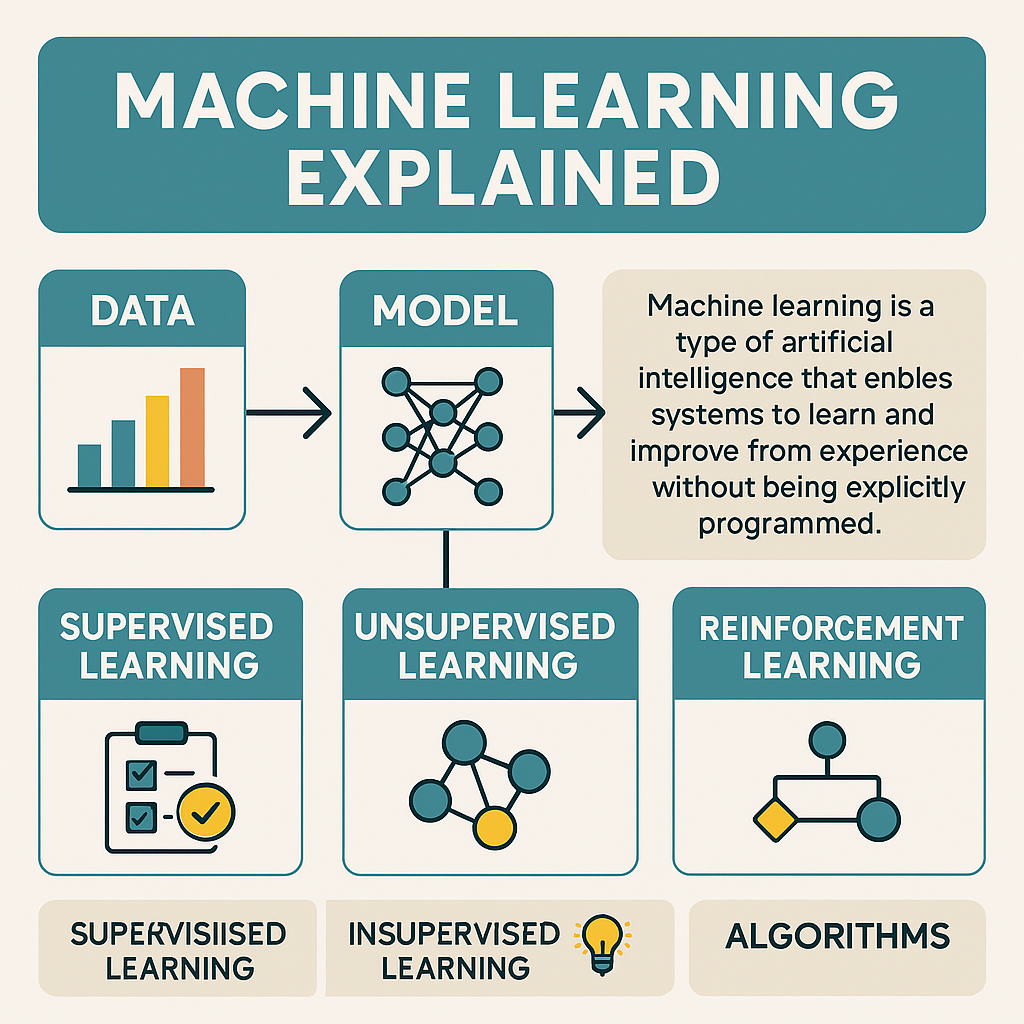🧠 Deep Learning: A Complete Guide Decoded: The Complete Guide That Will Make You an Neural Network Master!
Explore the foundations, history, key algorithms, and challenges of deep learning—one of the most transformative technologies of the 21st century.

Deep Learning has revolutionized the field of artificial intelligence (AI), powering applications from self-driving cars to language translation and medical diagnostics. In this guide, we’ll unpack what deep learning really means, trace its fascinating journey, explore how it’s reshaping industries, and peek into the hurdles it still needs to overcome.
🧠 What is Deep Learning?
Deep learning is a subset of machine learning that uses artificial neural networks with multiple layers (hence “deep”) to model complex patterns in data. These deep models can automatically discover intricate patterns in massive data—think of them as data-hungry detectives that require minimal human guidance.
🕰️ A Brief History of Deep Learning
Let’s take a quick trip through time to see how deep learning evolved from theory to world-changing tech.
- 1943: McCulloch and Pitts introduce the first artificial neuron model.
- 1950s–1980s: Basic neural network ideas evolve but face computational limitations.
- 1986: Backpropagation algorithm popularized by Rumelhart, Hinton, and Williams.
- 1990s: Neural networks decline in popularity in favor of SVMs and decision trees.
- 2006: Geoffrey Hinton and colleagues reintroduce deep belief networks, sparking a revival.
- 2012: AlexNet wins ImageNet competition—massive leap in image classification accuracy.
This event triggered the modern deep learning revolution.
🚀 The Deep Learning Revolution
So, what ignited the deep learning boom in the 2010s?
- Big Data: Availability of massive datasets (e.g., images, videos, text).
- Compute Power: GPUs and TPUs made large-scale model training feasible.
- Algorithmic Breakthroughs: Techniques like dropout, batch normalization, and better activation functions improved training efficiency.
Today, deep learning underpins major technologies like:
- Voice Assistants (e.g., Siri, Alexa)
- Autonomous Vehicles
- Language Models (e.g., GPT, BERT)
- Facial Recognition
- Medical Imaging
In short, deep learning is the secret sauce behind much of today’s smart tech.
🧮 Popular Deep Learning Architectures & Algorithms
Let’s break down the core deep learning building blocks that power modern AI systems.
1. Feedforward Neural Networks (FNNs)
The simplest deep learning model, used for basic classification/regression tasks.
2. Convolutional Neural Networks (CNNs)
Excellent for image and spatial data. Leverages convolution layers to extract features.
3. Recurrent Neural Networks (RNNs)
Designed for sequential data (e.g., time series, speech, language). Includes LSTMs and GRUs for long-term memory.
4. Autoencoders
Used for unsupervised learning, feature compression, and denoising.
5. Generative Adversarial Networks (GANs)
Comprise a generator and discriminator—used for creating realistic images and data augmentation.
6. Transformers
Current state-of-the-art architecture in NLP and beyond. Foundation for models like BERT, GPT, and Vision Transformers (ViTs).
🧗♂️ Scaling the Peaks: Challenges in Deep Learning
Despite its success, deep learning faces key hurdles:
- Data Hungry: Requires large, labeled datasets.
- Black Box: Difficult to interpret and explain decisions.
- Compute Intensive: Training large models is costly and environmentally demanding.
- Overfitting: Especially when training data is limited.
- Bias & Fairness: Risk of perpetuating societal biases in data.
🔧 Tools and Libraries
Some of the most popular tools used in deep learning include:
🌟 Final Thoughts
Deep learning has pushed the boundaries of what machines can do—from beating humans at Go to generating realistic art and language. But it’s not magic—it’s the product of years of innovation, relentless data crunching, and brilliant minds.
As we unlock the next chapter of AI, deep learning will continue to shape how machines learn, reason, and create.
Have insights or questions? Share them in the comments!


